Tŝilhqot’in Using Technology to Restore Traditional Land in the Chilcotin
WILLIAMS LAKE, B.C.—With support from the Forest Enhancement Society of BC (FESBC), Central Chilcotin Rehabilitation (CCR) is using drones to reforest areas of the Chilcotin plateau devastated by the 2017 wildfires. Watch the video.
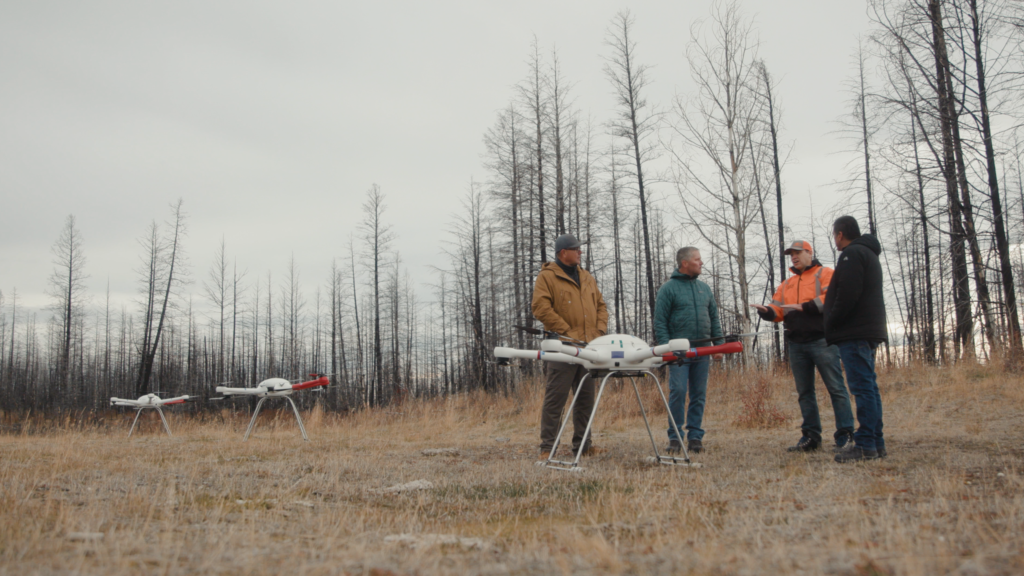
The project is a trial using drones and hand deployment to direct seed close to 52 hectares – roughly the area of 128 football fields – with thousands of both Lodgepole pine and Douglas fir. The seeds are embedded in a small vessel which contains a mix of soil and nutrients to give the seeds the best chance at germination. If successful, large fire-impacted areas can be restored much faster than by hand planting alone.
“Generations and generations relying on the land, and having the fire come through was very devastating for a lot of people,” said Paul Grinder, Councillor, Tl’etinqox Government. “This is just another way to improve and help the forest regenerate as fast as possible.”
In some areas, safety hazards, steep slopes or remoteness make traditional tree planting by humans difficult, expensive, and time consuming. Drone technology has the potential to complement more standard methods to lessen the overall time to restoration across the vast landscapes damaged by the megafires.
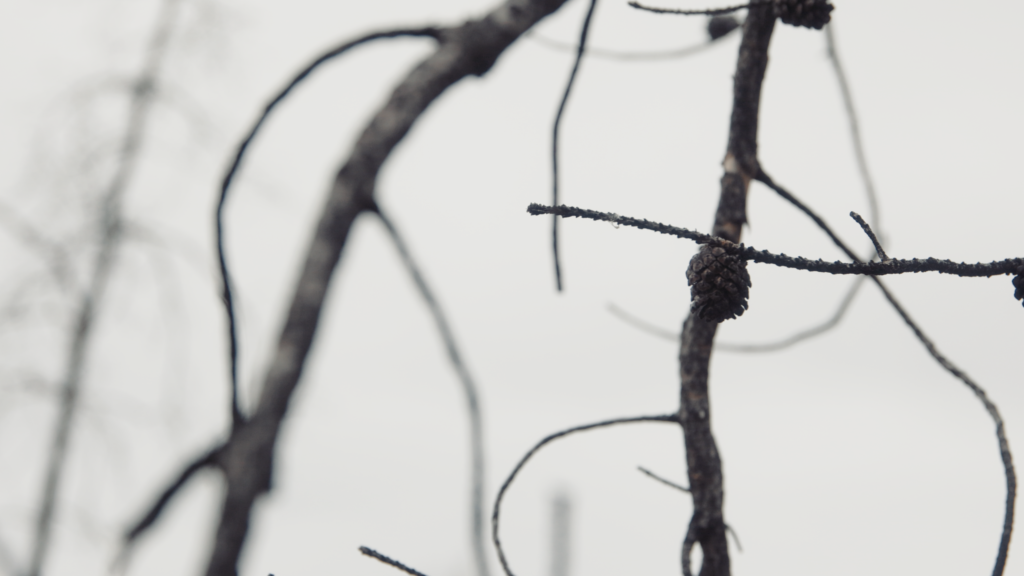
A pinecone hanging from a branch of a tree – the seeds are no longer viable because the fire consumed the whole tree 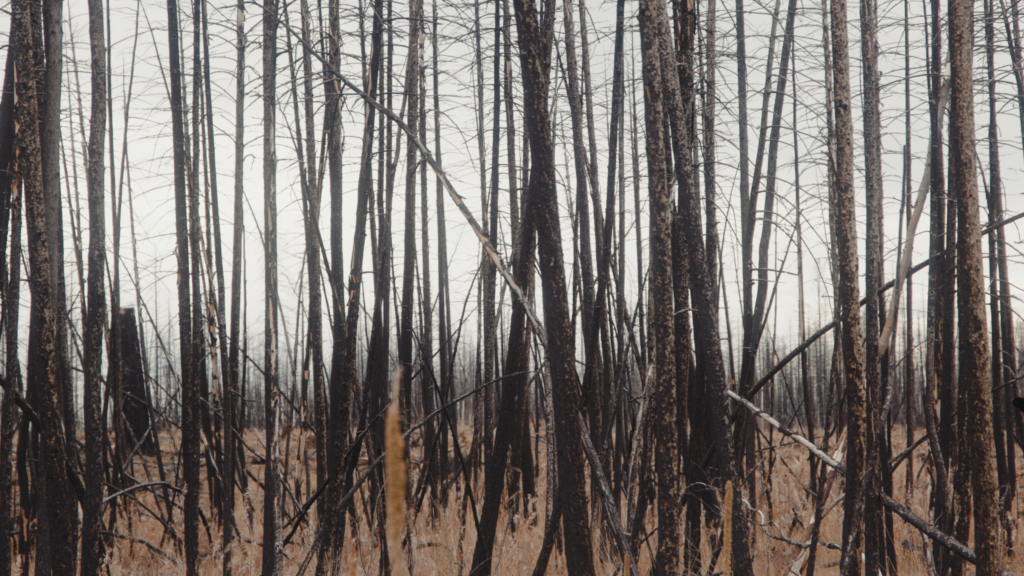
Lifeless tree trunks burned to the core after the modern-day high-intensity wildfire swept through the area 
An area burned in the 2017 wildfire season on the Chilcotin plateau 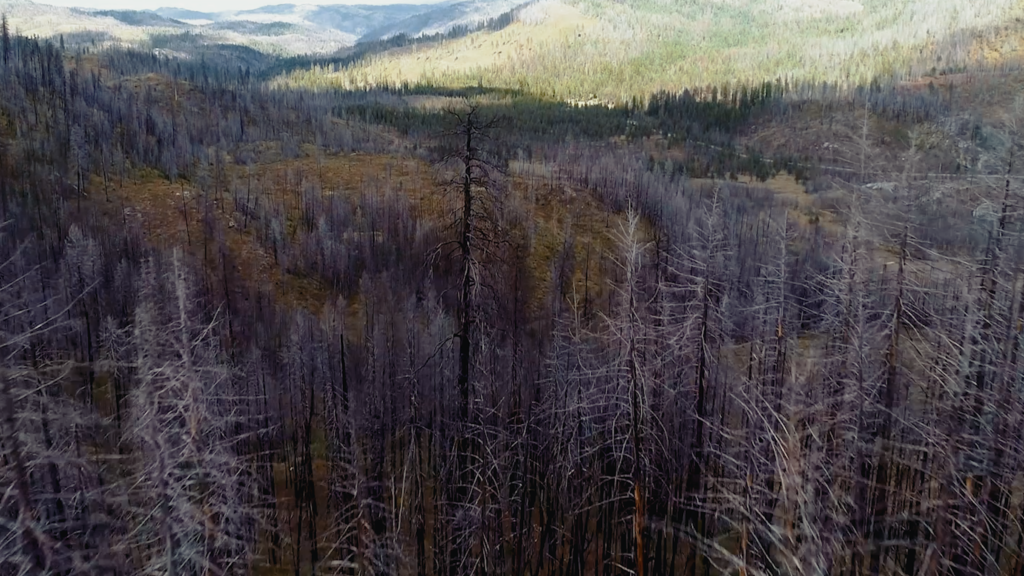
Aftermath of the Chilcotin plateau following modern-day high severity wildfires – entire trees top to bottom are torched 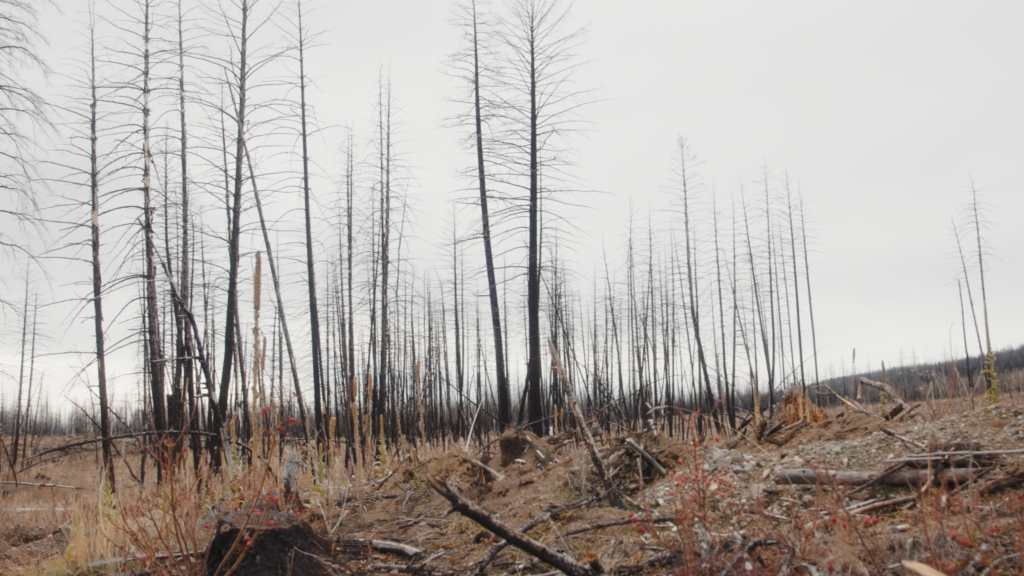
A section of burned forest on the Chilcotin plateau
Aerial seeding services for the Chilcotin plateau project were provided by DroneSeed, a Seattle-based reforestation company. The DroneSeed team worked with FESBC and CCR on the project by providing aerial seeding with heavy-lift drones. Additionally, DroneSeed is currently growing approximately 50,000 seedlings–from seed supplied by CCR–for interplanting within the pilot area of other CCR burned areas in spring of 2023. By combining new, innovative methods of reforestation with traditional ones, CCR and DroneSeed aim to use this hybrid approach of seed vessels and seedlings, both of which have distinct advantages in post-wildfire restoration. As part of the collaboration, DroneSeed’s experts will regularly revisit planting sites to track the seeds’ and seedlings’ growth and report progress back to FESBC and CCR.
“We’re here to try and figure out other ways to reforest, so we can do it more rapidly, with better success,” said Danny Strobbe, RFT, Forestry Superintendent, Tsi Del Del Enterprises Ltd. “There are danger trees, steep slopes, and places logging equipment can’t get to that you can’t salvage—there’s places you can’t send tree planters into.”
“We don’t have the resources to plant all the trees lost in the fires or the resources to grow all the seedlings in a short amount of time. This is a tool to help in our current efforts in reforestation and to increase our capacity.”
FESBC sees the potential of this program to address climate change concerns. Operations Manager Dave Conly, RPF, says planting trees is an important action in addressing climate change because growing forests absorb carbon. Reforestation of damaged areas supports healthy watersheds, wildlife habitat and re-establishes a forest ecosystem left barren by wildfire.
“We have granted over $29 million of funding toward projects with Central Chilcotin Rehabilitation—they are our second-largest recipient of funds,” said Conly. “They are a fantastic group of Indigenous people that have depended on the lands, waters, and forests in their traditional territories for thousands of years.”
“We’re doing this important work through CCR rehabilitating forest stands that have been devastated by wildfire,” remarked Percy Guichon, Director, CCR. “Proving CCR has the capability and capacity to help manage our resources and our territories goes a long way towards supporting our future.”
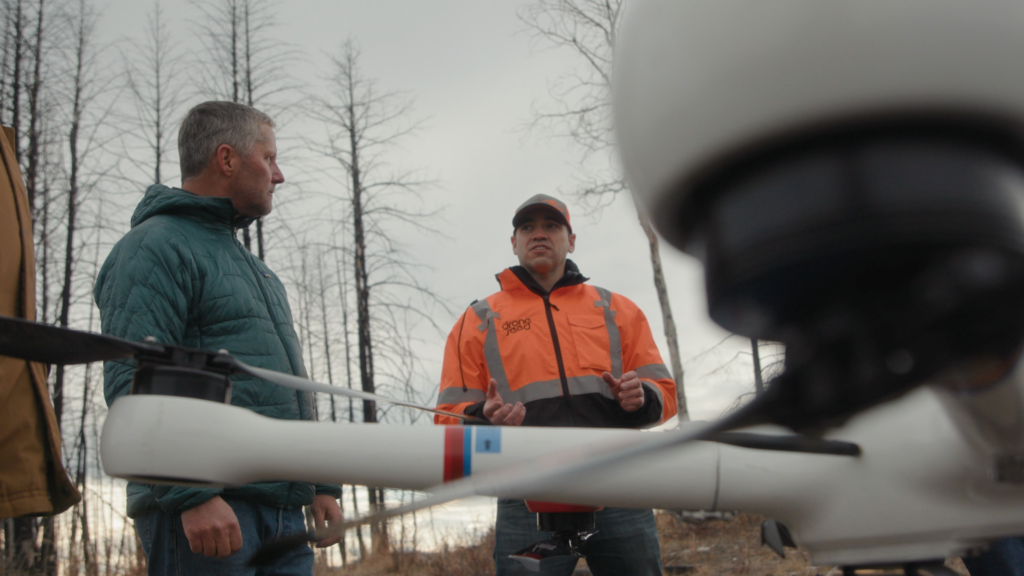
Dave Conly (Operations Manager, FESBC) and Grant Canary (CEO, Drone Seed) discuss Drone Seed technology and the project with CCR. 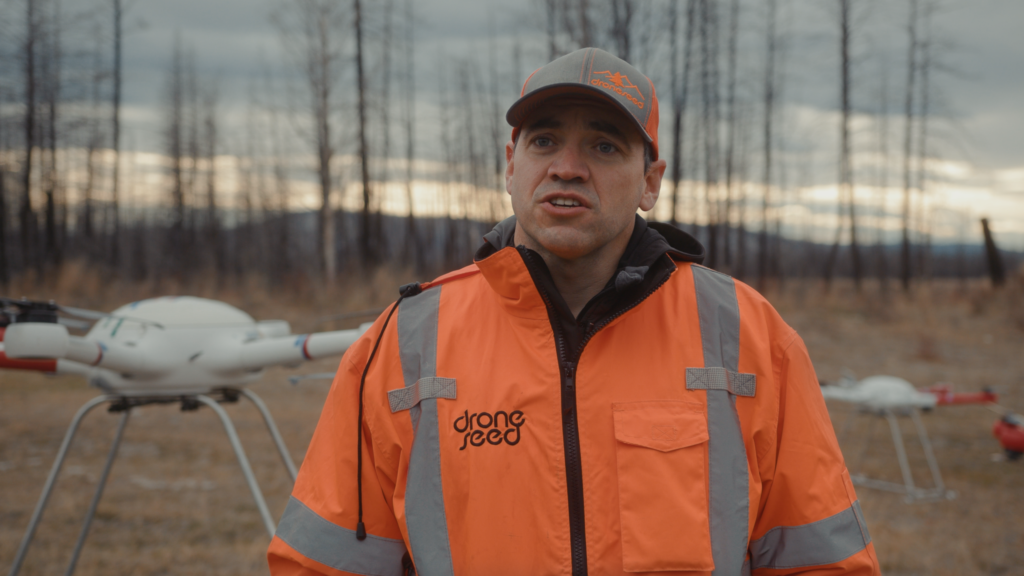
Grant Canary (CEO, Drone Seed) on site at the CCR drone planting project on the Chilcotin plateau. 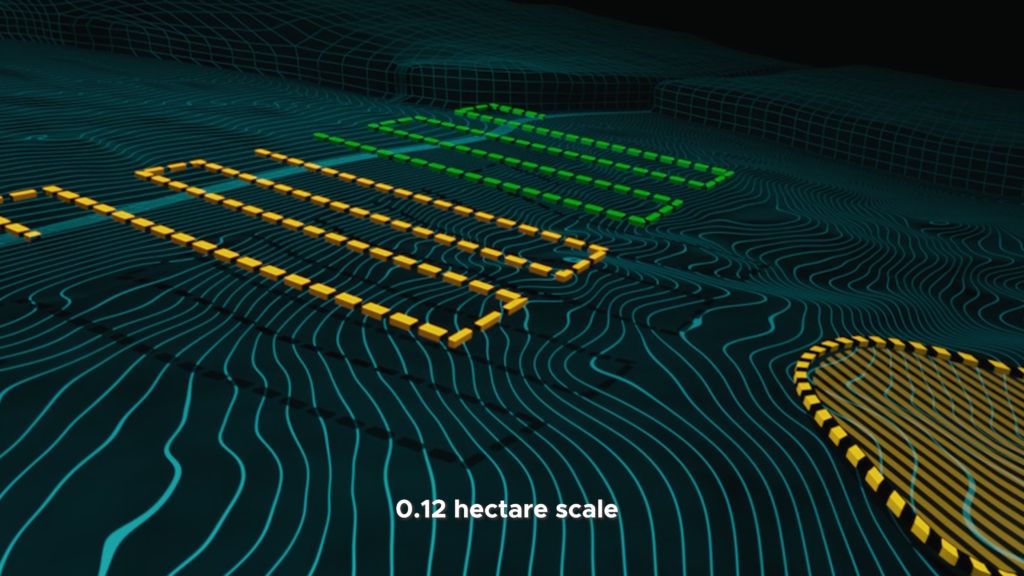
Using first survey flight and LIDAR, Drone Seed can precisely target where seed vessels will be distributed, in soil. 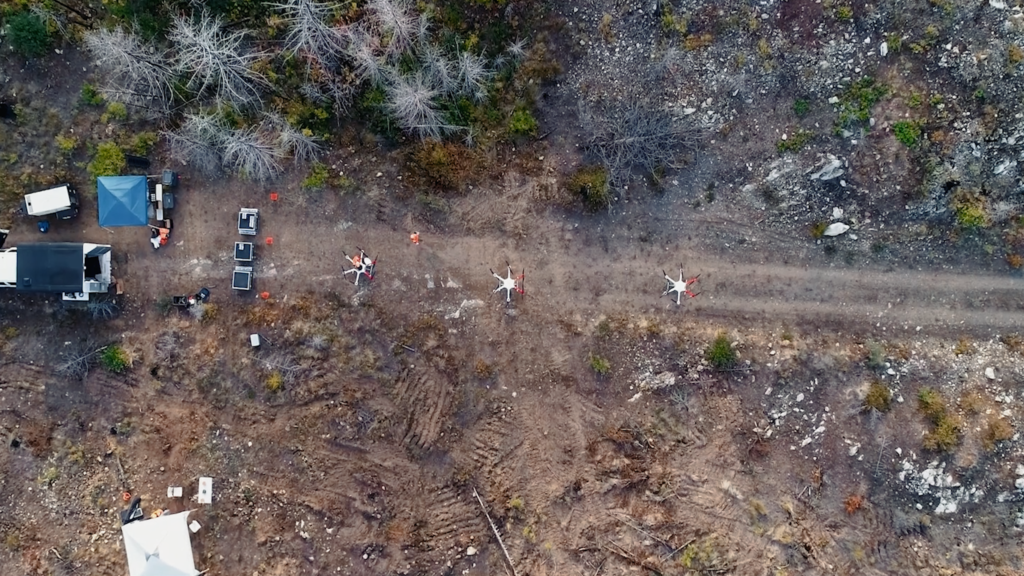
DroneSeed staging three heavy-lift drones in preparation to disperse seed vessels over the Chilcotin plateau
The use of drones and technology to re-establish forests could be transformational if it’s confirmed that it can be safer, faster, and cheaper. CCR and FESBC will share the results of the operational trial upon completion.
This project is funded in part by the Government of Canada.
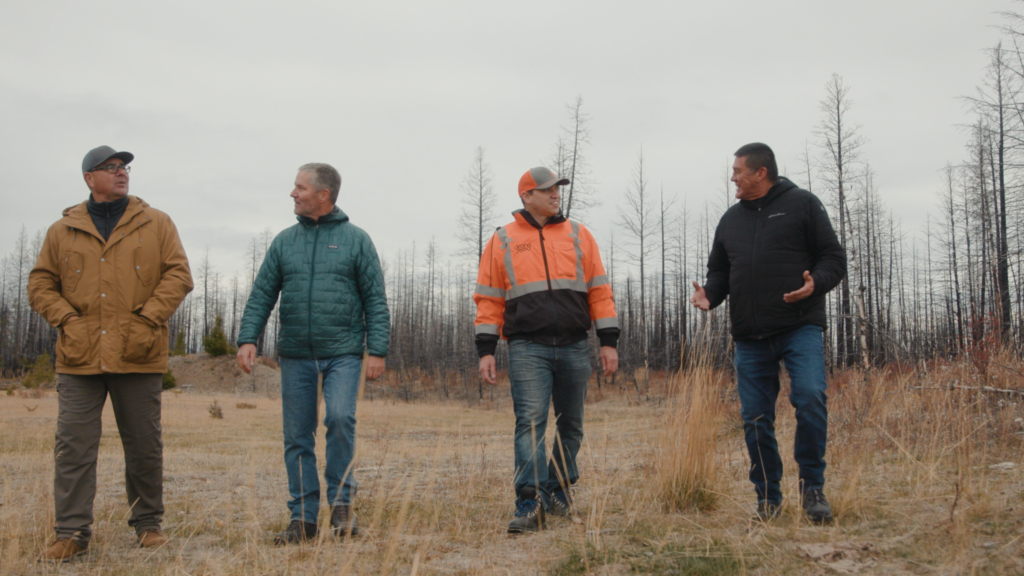
For an interview with FESBC or CCR contact:
Aleece Laird, Communications Liaison | communications@fesbc.ca | 250.574.0221
For an interview with Drone Seed contact:
Matt Matyjek, Communications Liaison | press@droneseed.co | 202.999.9455
About CCR
CCR is a joint venture company between Tŝideldel First Nation and Tl’etinqox Government focused on forest initiatives within their traditional territories, with the purpose of providing sustained economic opportunity within their communities and ensuring the long-term sustainability of their traditional forest land-base.
About FESBC
In February 2016, the Government of British Columbia announced the formation of FESBC with initial funding of $85 million and a five-member Board of Directors to oversee the establishment of the Society and the delivery of its purposes. An additional $150 million was announced in early 2017. The purposes of FESBC are to advance environmental and resource stewardship of BC’s forests by: 1) preventing and mitigating the impact of wildfires; 2) improving damaged or low value forests; 3) improving habitat for wildlife; 4) supporting the use of fibre from damaged and low value forests; and 5) treating forests to improve the management of greenhouse gases. As of March 2021, the Forest Enhancement Society of BC has supported 269 projects valued at $237.6 million, generating $357 million dollars in economic activity in partnership with the Province of BC and the Government of Canada.
About DroneSeed
DroneSeed is scaling reforestation to mitigate the worst effects of climate change. After its recent acquisition of Silvaseed, a 130 year old forestry company, DroneSeed serves as a one-stop-shop for reforestation, offering seed supplies, nursery-grown seedlings, aerial seeding using drones, hand planting, and high-quality, forward-looking carbon offsets. DroneSeed is combining new technologies and market mechanisms with traditional forestry practices to reforest after wildfires and help save our planet.
